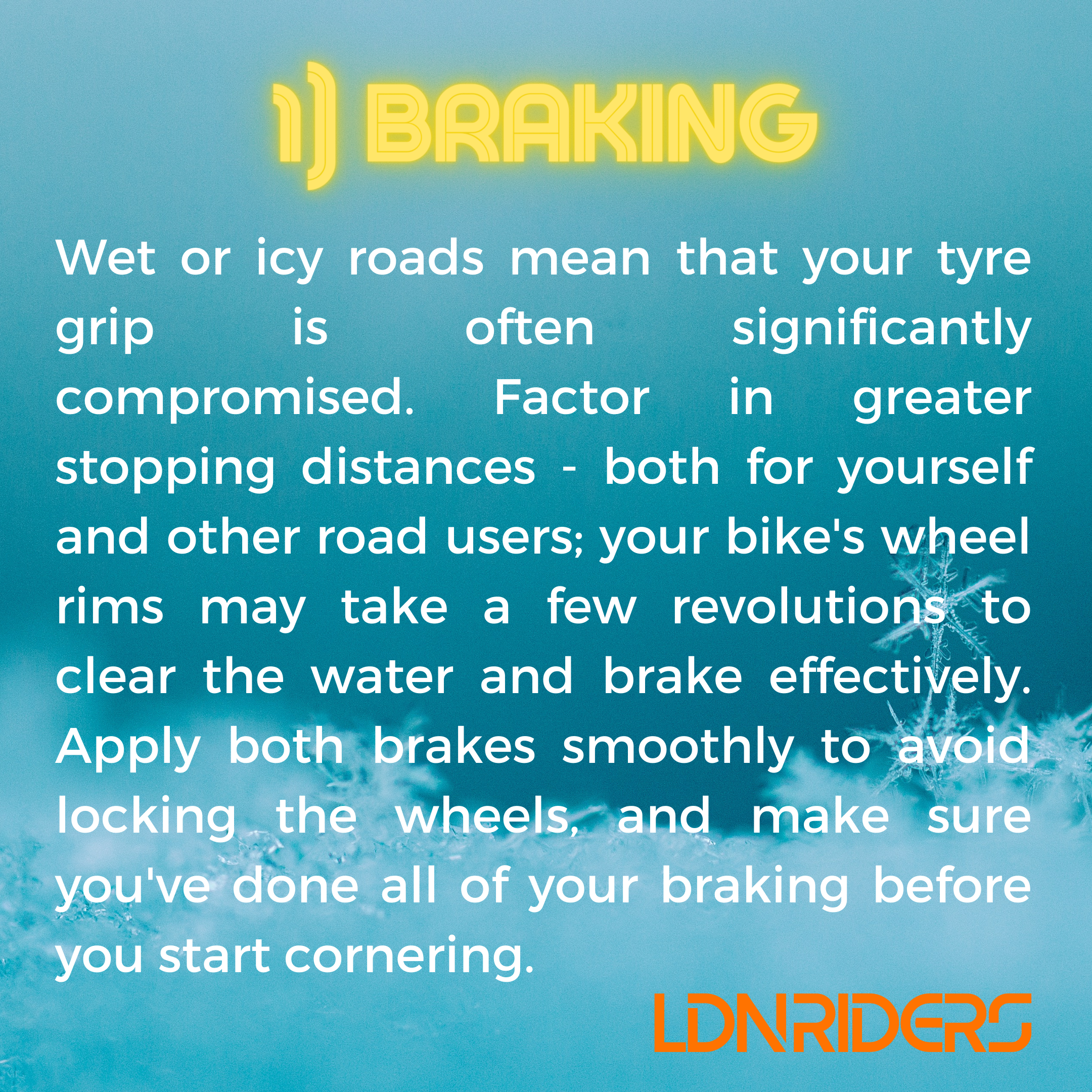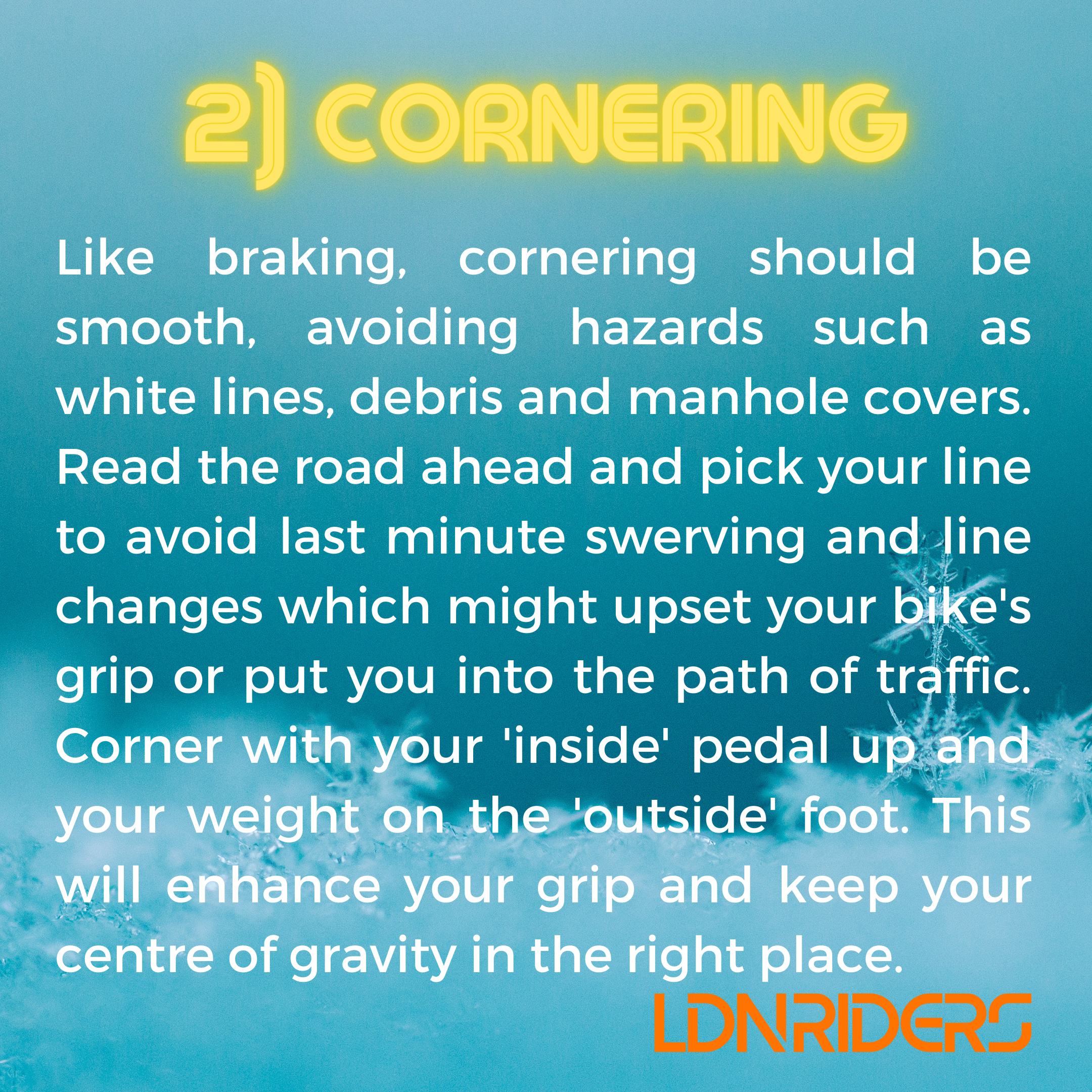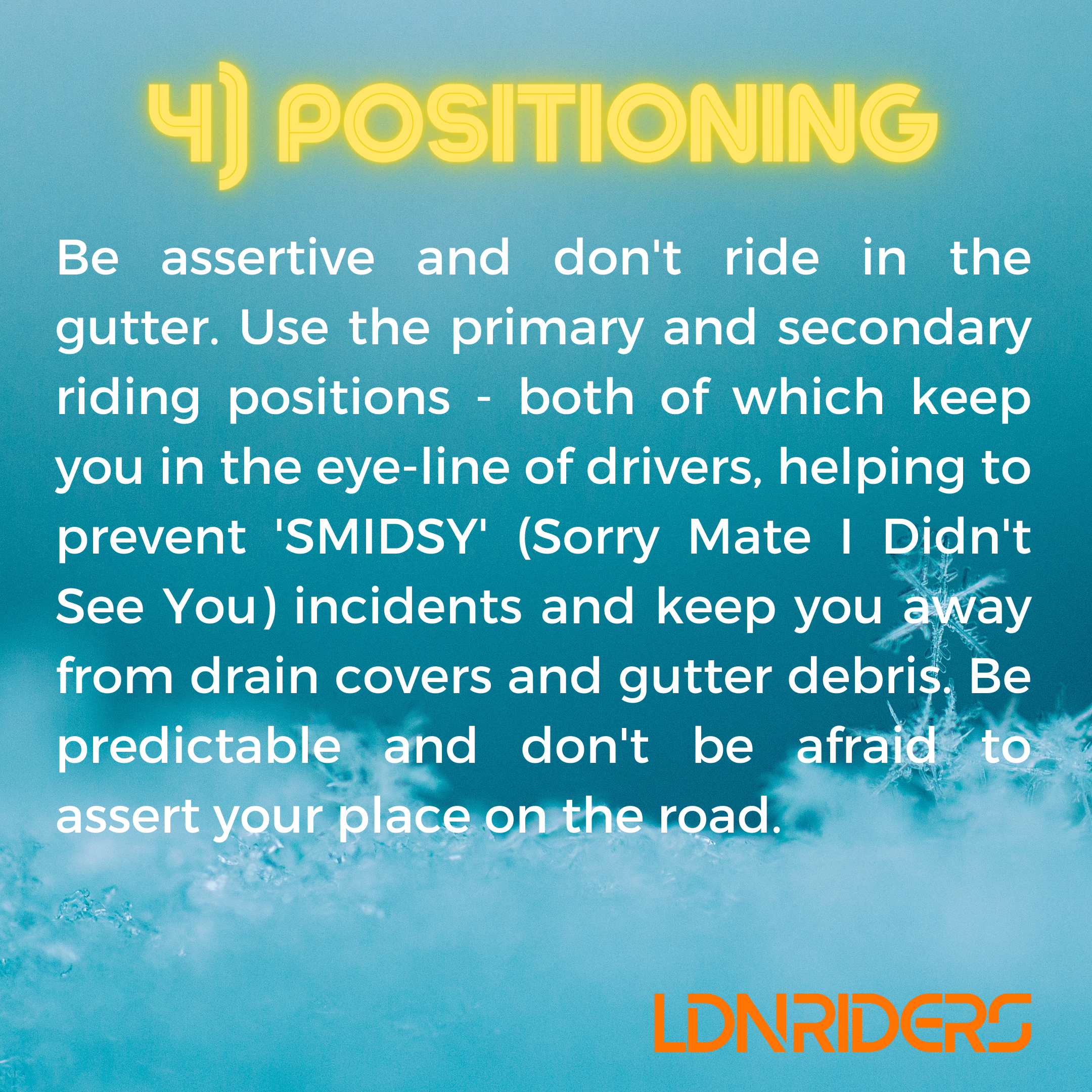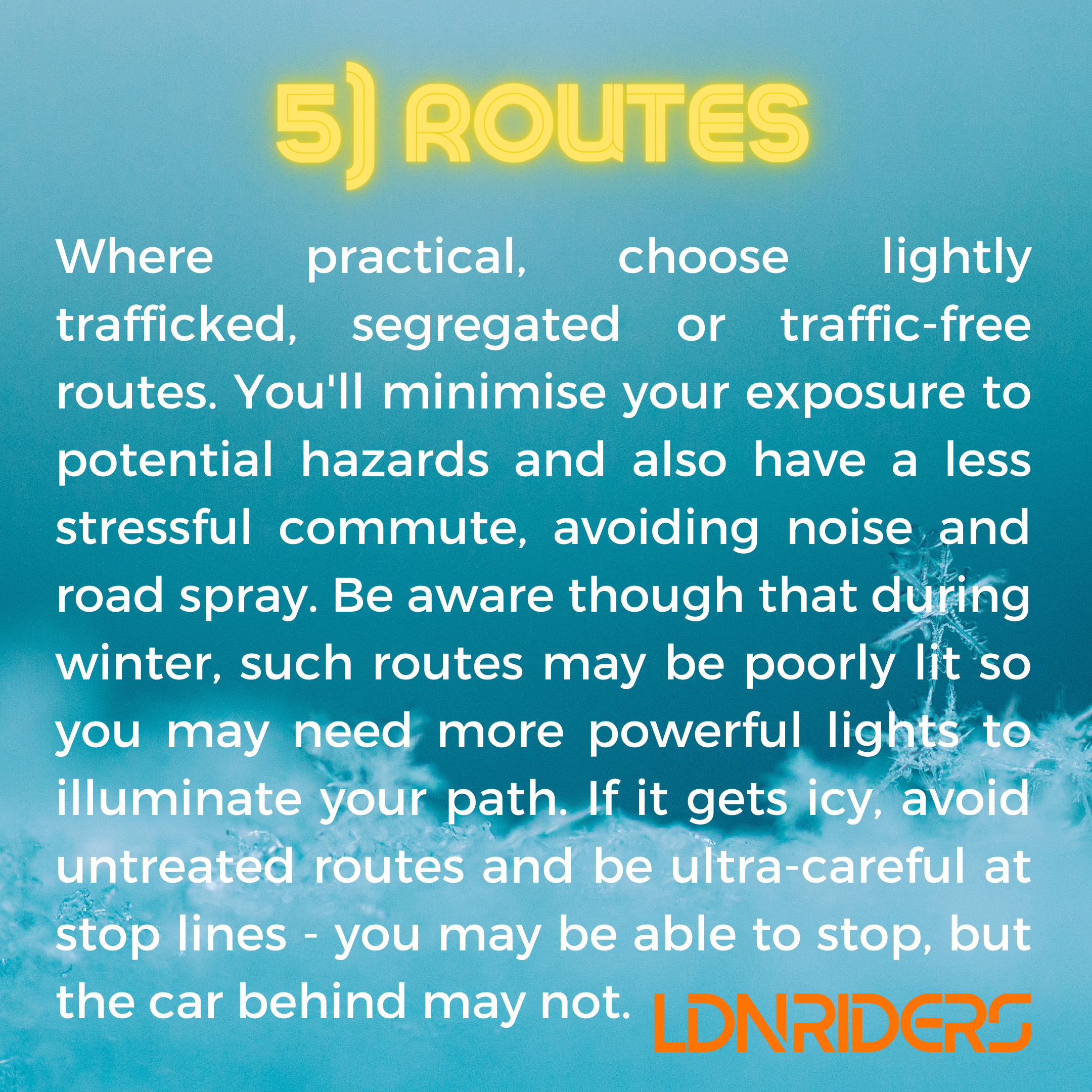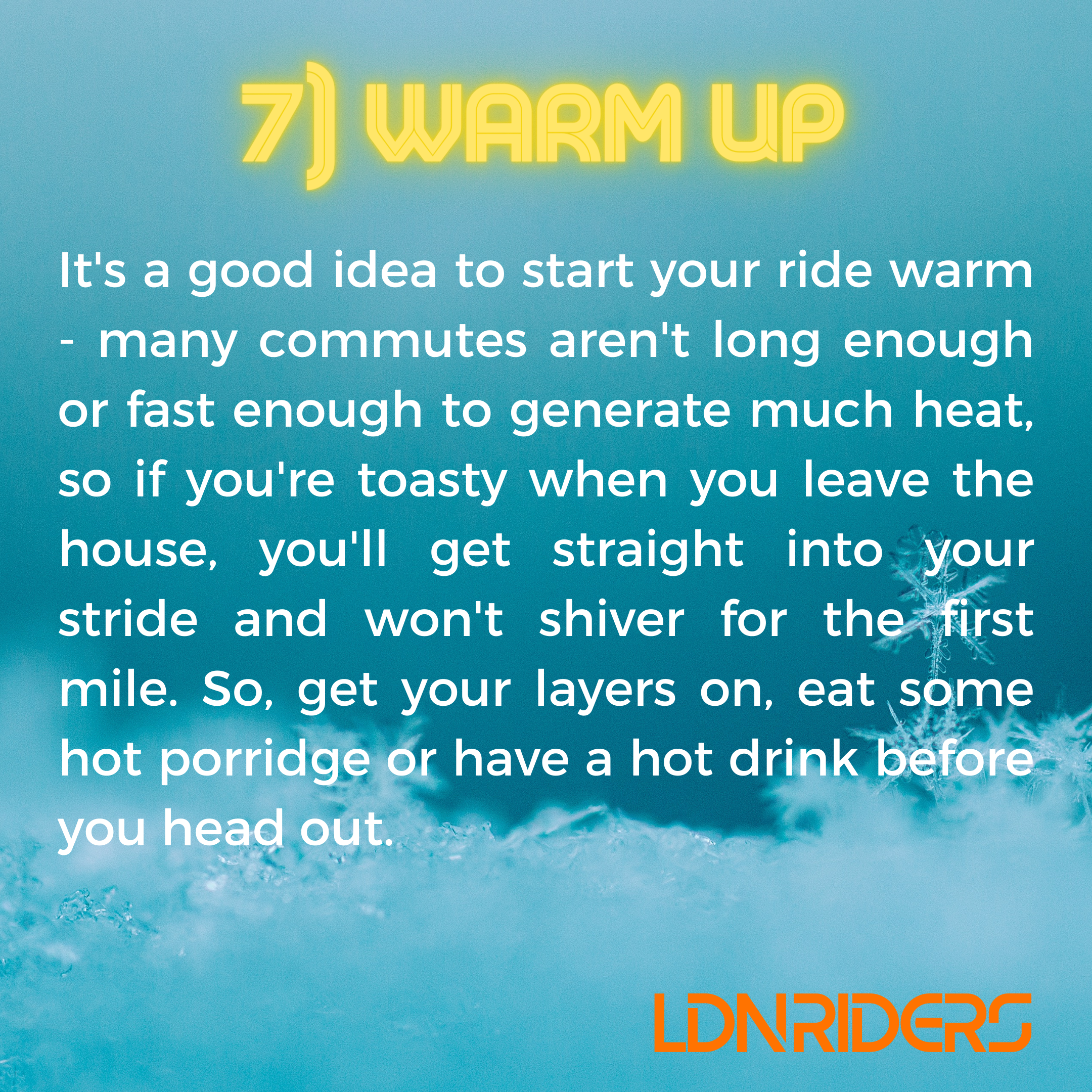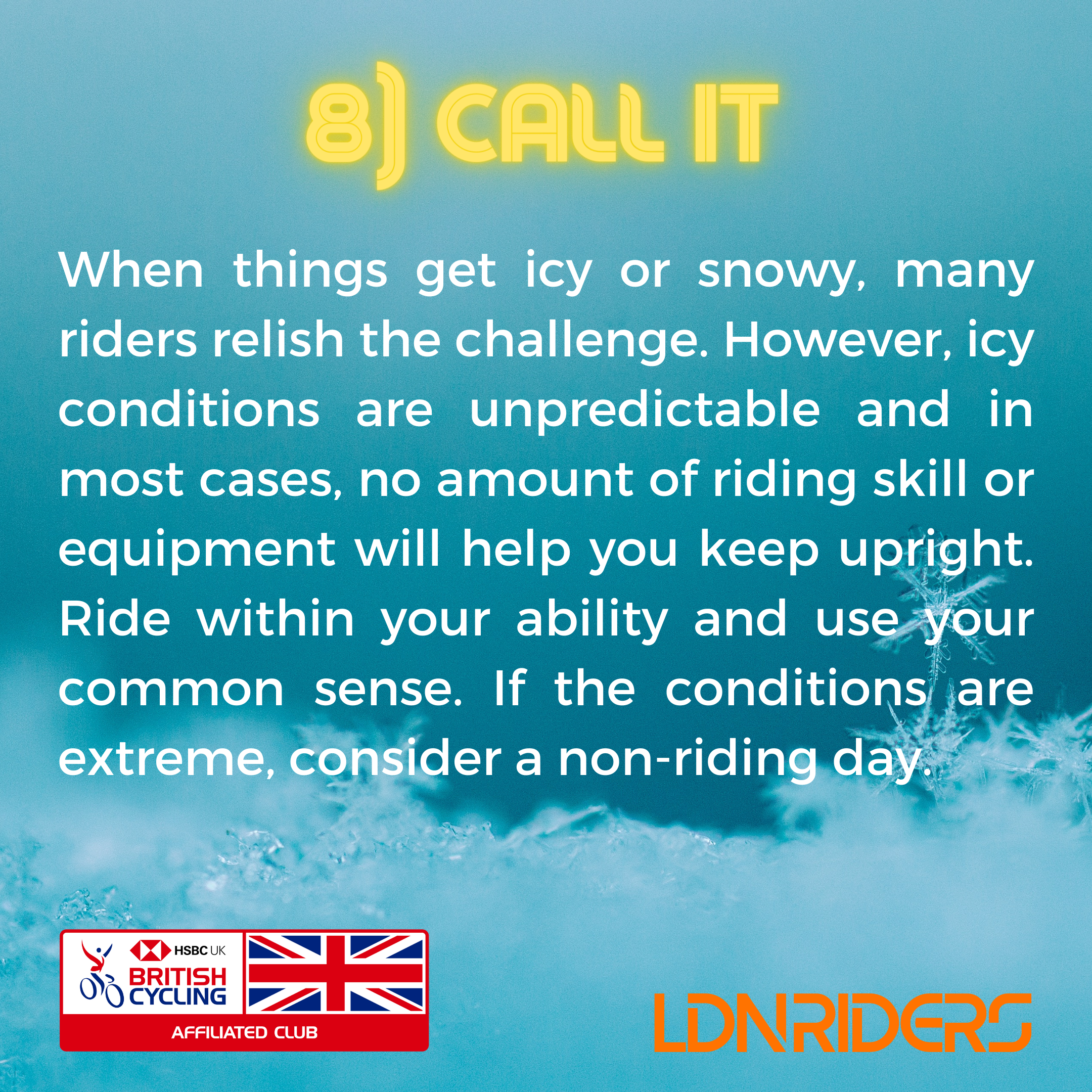8 Essential Winter Cycling Tips for Cold Weather Riding
As the weather gets colder and the days get shorter, it can be a challenge to maintain the same level of cycling activity as during the warmer seasons.
However, with the right precautions and strategies, it is entirely possible to continue cycling safely and comfortably during the winter.
Our friends at British Cycling have shared their top tips and best practices for cycling in colder weather, from proper clothing and equipment to route planning and maintenance. Whether you're an experienced winter cyclist or new to the sport, we hope these tips will help you stay safe and enjoy your rides all winter long.
Let’s Ride!
1) BRAKING
Wet or icy roads mean that your tyre grip is often significantly compromised. Factor in greater stopping distances - both for yourself and other road users; your bike's wheel rims may take a few revolutions to clear the water and brake effectively. Apply both brakes smoothly to avoid locking the wheels, and make sure you've done all of your braking before you start cornering.
2) CORNERING
Like braking, cornering should be smooth, avoiding hazards such as white lines, debris and manhole covers. Read the road ahead and pick your line to avoid last minute swerving and line changes which might upset your bike's grip or put you into the path of traffic. Corner with your 'inside' pedal up and your weight on the 'outside' foot. This will enhance your grip and keep your centre of gravity in the right place.
3) VISIBILITY
Also, bear in mind that other road users' visibility may be compromised - give other road users plenty of time and space to do the unexpected.
4) ROAD POSITIONING
Be assertive and don't ride in the gutter. Use the primary and secondary riding positions - both of which keep you in the eye-line of drivers, helping to prevent 'SMIDSY' (Sorry Mate I Didn't See You) incidents and keep you away from drain covers and gutter debris. Be predictable and don't be afraid to assert your place on the road.
5) ROUTES
Where practical, choose lightly trafficked, segregated or traffic-free routes. You'll minimise your exposure to potential hazards and also have a less stressful commute, avoiding noise and road spray. Be aware though that during winter, such routes may be poorly lit so you may need more powerful lights to illuminate your path. If it gets icy, avoid untreated routes and be ultra-careful at stop lines - you may be able to stop, but the car behind may not.
6) ALLOW EXTRA TIME
Harsh weather conditions may slow you and the surrounding traffic. Factor in a few more minutes so you're not late for work.
7) WARM UP
It's a good idea to start your ride warm - many commutes aren't long enough or fast enough to generate much heat, so if you're toasty when you leave the house, you'll get straight into your stride and won't shiver for the first mile. So get your layers on, eat some hot porridge or have a hot drink before you head out.
8) MAKE THE CALL
When things get icy or snowy, many riders relish the challenge. However, icy conditions are unpredictable and in most cases, no amount of riding skill or equipment will help you keep upright. Ride within your ability and use your common sense. If the conditions are extreme, consider a non-riding day.


